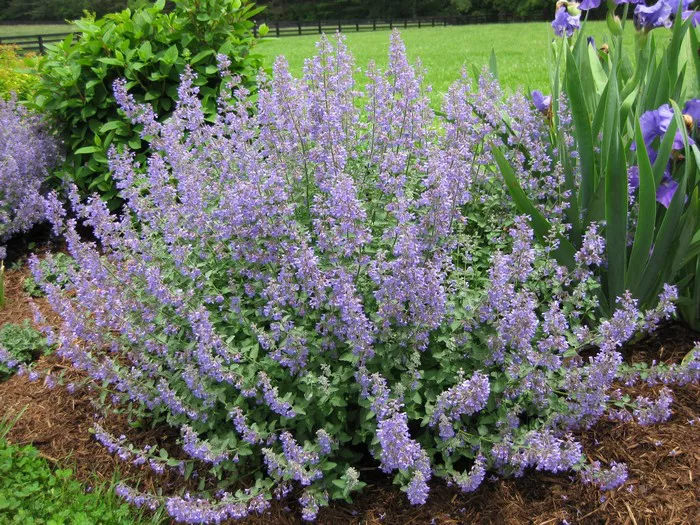Mint, with its refreshing aroma and versatile uses, is a beloved herb in gardens and kitchens worldwide. Beyond its culinary and medicinal properties, mint’s flowering stage adds an enchanting dimension to its allure. As mint plants mature, they undergo a remarkable transformation, producing delicate blooms that enhance their visual appeal. In this article, we delve into the captivating world of mint flowers, exploring their appearance, significance, and cultivation tips.
Understanding Mint Flowers: A Visual Delight
Mint flowers emerge from the plant’s leaf axils, typically in late spring or early summer, depending on the specific variety and local climate conditions. These blooms, though small, possess a distinct charm characterized by their unique shape, color, and arrangement. While mint varieties may exhibit slight variations in flower characteristics, certain features remain consistent across most species.
Appearance:
The flowers of mint plants typically form in clusters or spikes, rising above the foliage on sturdy stems. Each individual flower consists of a tubular structure with four lobes, resembling miniature trumpets. The color of mint flowers varies depending on the species, ranging from pale pink and lavender to white and purple. Some cultivars even boast bi-colored or variegated blooms, adding to their visual appeal.
Fragrance:
In addition to their visual beauty, mint flowers exude a subtle yet pleasant fragrance, reminiscent of the herb’s aromatic leaves. This delicate scent, though not as potent as the leaves, adds another sensory dimension to the garden environment. It can attract pollinators such as bees, butterflies, and hoverflies, contributing to the ecological balance of the surrounding ecosystem.
Significance of Mint Flowers: Beyond Aesthetics
While the visual appeal of mint flowers is undeniable, their significance extends beyond mere ornamentation. Understanding the role of these blooms sheds light on their ecological importance, as well as their impact on gardening practices and culinary traditions.
Ecological Role:
Mint flowers play a crucial role in supporting pollinators, serving as a vital food source for bees and other beneficial insects. As pollinators visit the flowers to collect nectar and pollen, they facilitate the process of fertilization, enabling the plants to produce seeds for future generations. By cultivating mint and allowing it to flower, gardeners can contribute to the conservation of pollinator populations and promote biodiversity in their local environments.
Gardening Practices:
In gardening, allowing mint plants to flower can influence cultivation practices and harvest timing. While some gardeners prefer to prune off the flowers to promote foliage growth and prevent self-seeding, others embrace the blooms for their ornamental value and ecological benefits. Managing mint flowers requires careful consideration of garden objectives, as well as the specific requirements of each mint variety.
Culinary and Medicinal Uses:
Although mint flowers are not as commonly used in culinary or medicinal applications as the leaves, they can still impart flavor and aroma to dishes and herbal preparations. Mint flowers possess a milder flavor compared to the leaves, with subtle floral notes that complement various culinary creations. In addition to their culinary potential, mint flowers may also be used in teas, infusions, and decorative garnishes, adding a touch of elegance to beverages and desserts.
Cultivating Mint Flowers: Tips for Success
For gardeners seeking to cultivate mint and enjoy its blossoms, certain strategies can enhance success and optimize plant health. From selecting suitable varieties to providing proper care and maintenance, here are some tips for growing vibrant mint flowers in your garden:
1. Variety Selection:
Choose mint varieties known for their prolific flowering habit and ornamental appeal. Popular options include spearmint (Mentha spicata), peppermint (Mentha × piperita), chocolate mint (Mentha × piperita ‘Chocolate’), and pineapple mint (Mentha suaveolens ‘Variegata’). Consider the specific characteristics and growing requirements of each variety to ensure compatibility with your garden environment.
2. Site Selection:
Select a sunny to partially shaded location with well-drained soil for planting mint. While mint is adaptable to various soil types, it thrives in fertile, moisture-retentive soil with a slightly acidic to neutral pH. Avoid planting mint in areas prone to waterlogging or excessive dryness, as these conditions can adversely affect plant growth and flowering.
3. Planting and Spacing:
Plant mint either from seeds or nursery-grown transplants, ensuring proper spacing between individual plants to prevent overcrowding. Space mint plants approximately 12 to 18 inches apart to allow for adequate air circulation and reduce competition for resources. Alternatively, grow mint in containers or raised beds to contain its vigorous growth and prevent spreading.
4. Watering and Fertilization:
Maintain consistent soil moisture by watering mint regularly, especially during periods of drought or high temperatures. Avoid overwatering, as excessive moisture can lead to root rot and other fungal diseases. Apply a balanced fertilizer or compost annually to provide essential nutrients for healthy growth and flowering.
5. Pruning and Maintenance:
Prune mint plants periodically to encourage bushy growth and prevent them from becoming leggy or invasive. Remove spent flowers and stems to prolong the flowering period and promote continuous blooming throughout the growing season. Regularly monitor mint plants for signs of pests and diseases, taking prompt action to address any issues that arise.
6. Harvesting Mint Flowers:
When mint plants begin to flower, harvest the blooms as desired for culinary or decorative purposes. Use sharp scissors or pruning shears to snip the flower spikes near the base, taking care not to damage the surrounding foliage. Harvesting mint flowers encourages the plant to produce new growth and may prolong the flowering season.
Conclusion
In conclusion, mint flowers are not merely ornamental adornments but essential components of the plant’s lifecycle with ecological, culinary, and aesthetic significance. By appreciating the beauty of mint flowers and understanding their role in the garden ecosystem, gardeners can cultivate thriving mint plants while supporting pollinators and enhancing their culinary creations. With proper care and cultivation techniques, mint flowers can enrich garden landscapes and delight the senses with their delicate charm and subtle fragrance. Whether enjoyed fresh in salads and beverages or dried for herbal preparations, mint flowers embody the timeless appeal of this beloved herb, captivating hearts and gardens alike.


